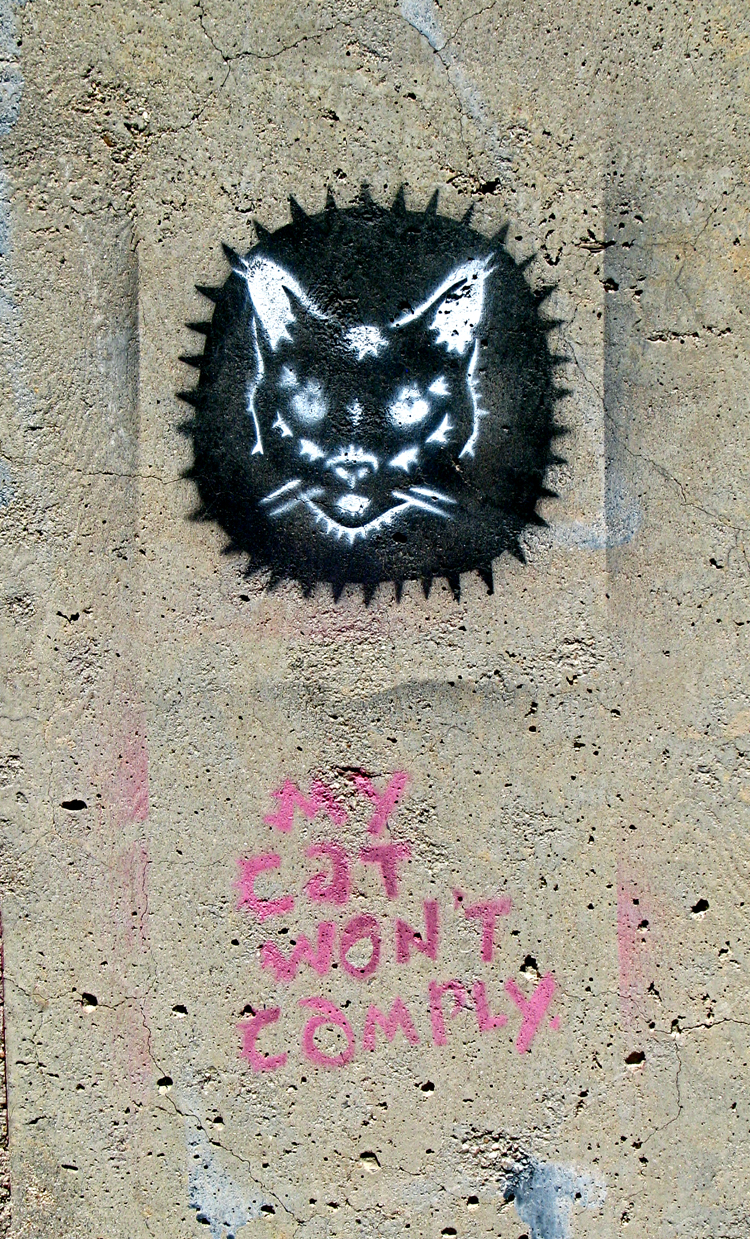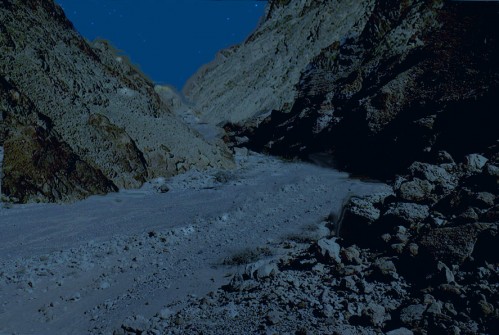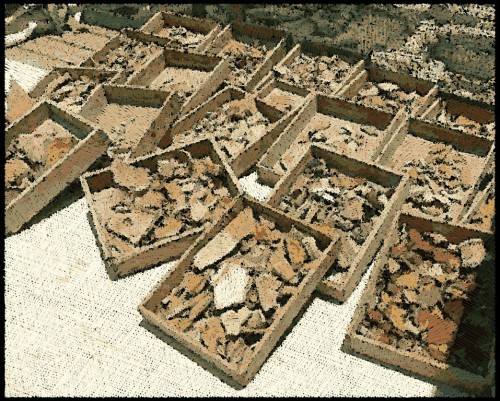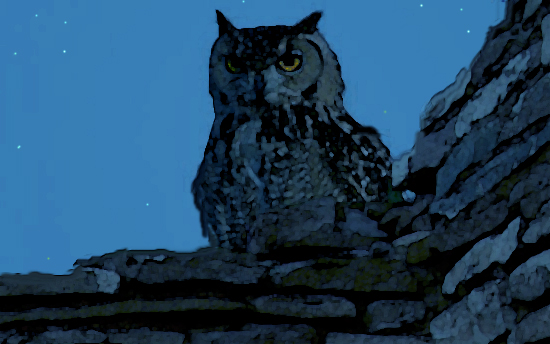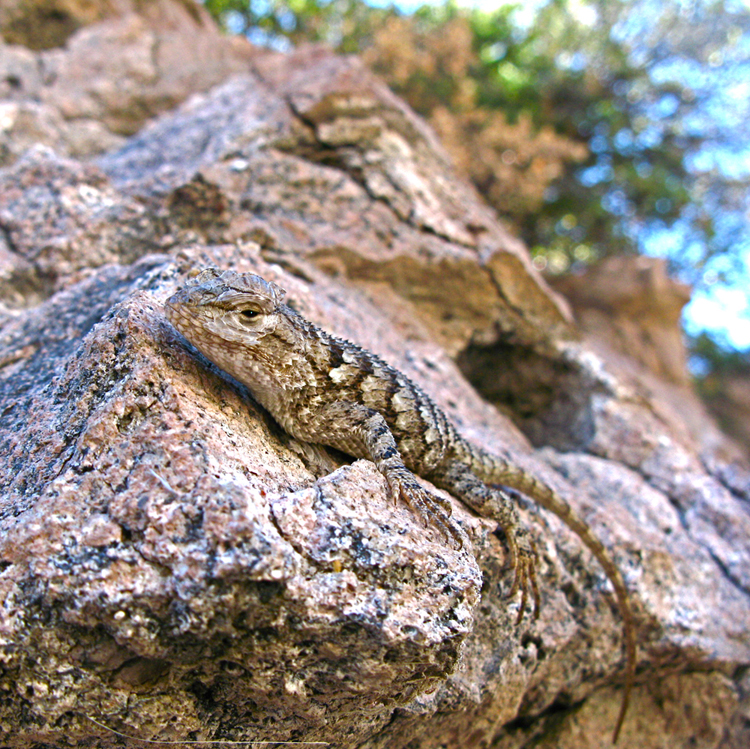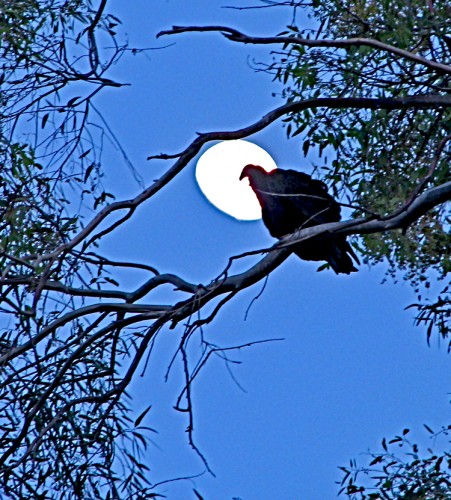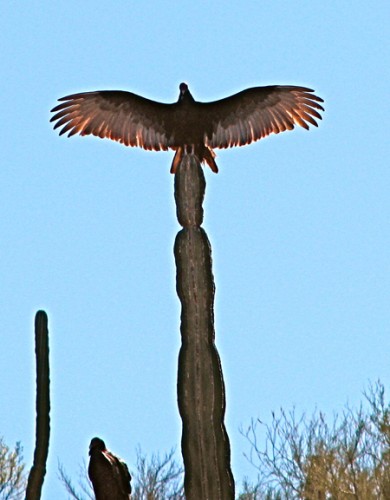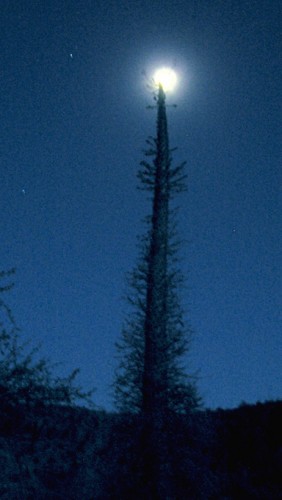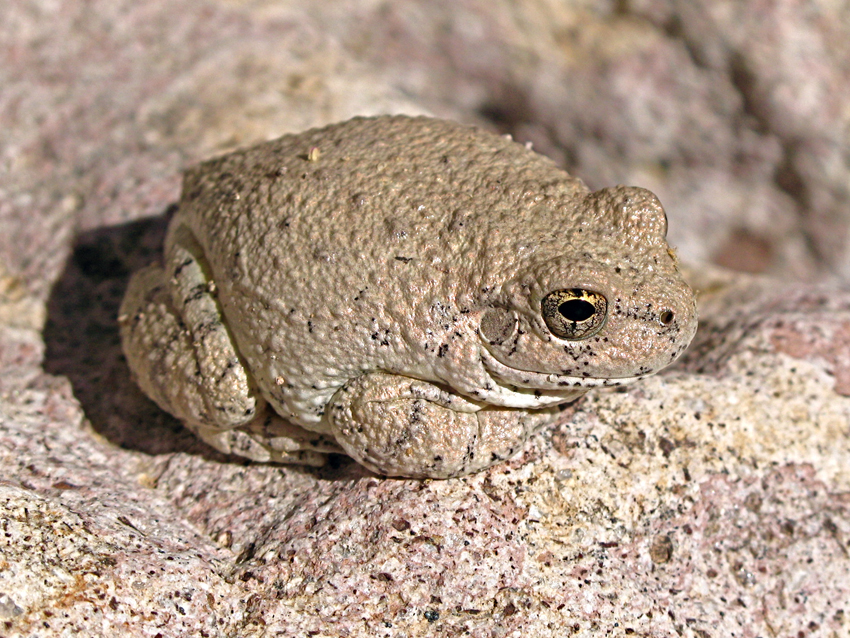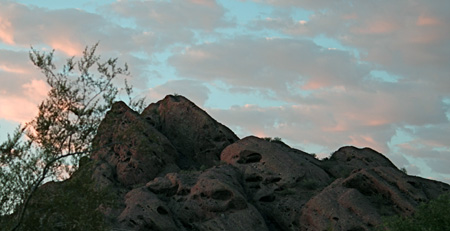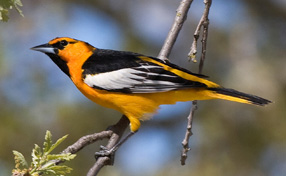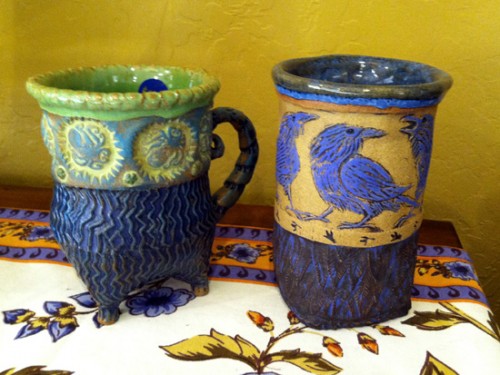This is the fifth installment of a series. Click on the link at the bottom of the page to continue to the next installment. Or, click here to read from the very beginning. Previously:
On the underside of the handle the mirror reflected a small textured mark pressed into the clay: a geometric, elemental symbol that was very familiar to her within the narrow context of her own literary subject. Was this what Avsa wanted her to see?
The Character
“There’s a character stamped here,” Professor Wayfarer said. “Have you taken a look at this?” she asked Wilson Rankle, who shook his head. To judge by the line of his mouth the headshake didn’t mean no so much as it indicated a desire for no involvement.
“It’s just a potter’s mark,” he said. “But feel free to make more of it, if you want.”
Finally with something to sink her formidable scholarly incisors into, Einer Wayfarer sat down. The old wooden chair creaked under her. She pushed her glasses up, then farther up, onto her forehead, and held the piece just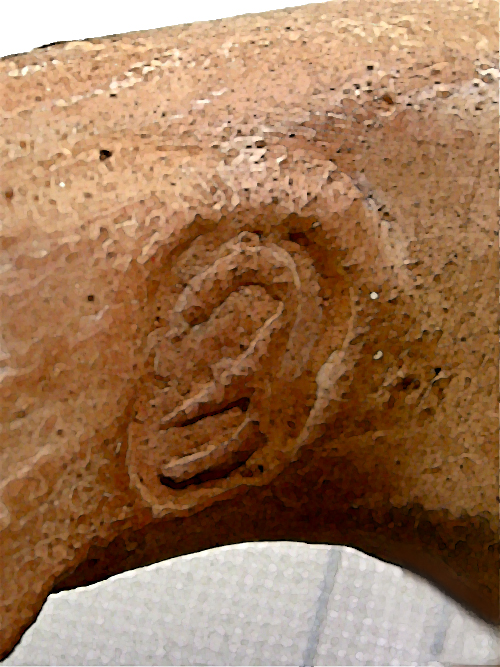 inches under her short nose. Several minutes passed as she studied the object in silence, turning it over, her breath audible in her nostrils. She held it one way, then inverted it, and then looked at it again in the small mirror. Although she was aware of the silence in the room, and the pressure of curiosity in the bodies around her, she took her time. She asked someone to open the door to let in fresh air, and kept examining the object without noticing if anyone did. After another three minutes of intense, unhurried scrutiny, she cleared her throat, coughed twice, and pushed the piece away, vexed.
inches under her short nose. Several minutes passed as she studied the object in silence, turning it over, her breath audible in her nostrils. She held it one way, then inverted it, and then looked at it again in the small mirror. Although she was aware of the silence in the room, and the pressure of curiosity in the bodies around her, she took her time. She asked someone to open the door to let in fresh air, and kept examining the object without noticing if anyone did. After another three minutes of intense, unhurried scrutiny, she cleared her throat, coughed twice, and pushed the piece away, vexed.
On closer examination, the character remained stubborn, mute. No, not mute: over-communicative and ambiguous – it sent too many messages, not too few. The angled strokes lent themselves to several interpretations. Ignoring chronology, Wayfarer could think of five possible writing systems that could have produced it, or, realistically, four and a long shot. And that didn’t take into account aberrant scribal forms, geographic variation, the idiosyncrasy of an individual artist, semi-literacy, or simple human error. Undecided, Wayfarer resorted to a cheap but effective professorial trick: putting a student on the spot.
“Who can tell me how this character could be read?” she asked the students, gesturing for them to come in close for a look. Sometimes young brains had fresh ideas.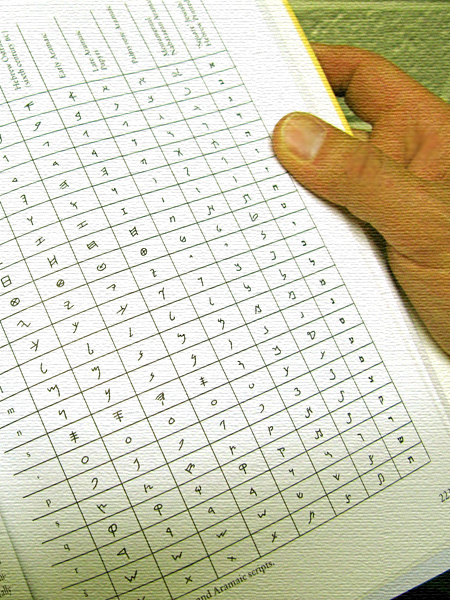
After a pause, several of them spoke at once. “Well, it’s not cuneiform… Is it Aramaic?” “It’s a hieratic 6?” “It kind of looks like a Greek Xi…” “There’s a sign like that inscribed on a jar from Bet She’an…” “A Linear B syllabic symbol?” “Is it Phoenician?” Wayfarer noticed that like herself, they were all over the map, and the time line.
“Come on, people,” Rankle scolded his flock. “Who said Linear B? On a jar here?”
The undergrad looked sheepish. Murmuring something unconvincing about Mycenaean trade routes, he said defensively, “It could happen…”
Rankle glared at him. “Go look it up in Hooker, Eric, and tell me if you find a Linear B character anything like that.”
Noting that the director wasn’t contributing a suggestion himself, Wayfarer mercifully interrupted the peevish catechism. “So it’s not Linear B. On Dr. Rankle’s authority — and Mr. Hooker’s — we can at least rule out that possibility. So what is it? Most of the rest of you seem convinced it’s an alphabetic symbol. Is it? Is it a hieratic numeral? A logogram? Just a potter’s mark? Or if you insist on an alphabet, what about proto-sinaitic? Who reads paleo-Hebrew?” She offered the clay lump around to her left.
The students looked blank. “What paleo-letters have three horizontals?” Rankle prompted, to save time.
“khet,” said someone. “hey,” said someone else, tentatively. “And samekh.” “Could it be a funky yod?” “A shin, if you turn it this way?”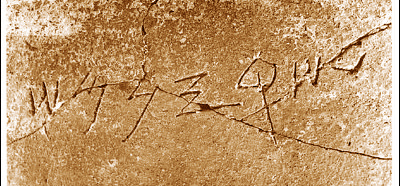
“Good — three verticals for shin if you re-orient it. So, we see the problem: either this or that… or maybe the other… or all of them,” Wayfarer agreed with the students comprehensively. “But, not exactly any of them.” She held the piece out once again. “Anything else? Anyone? Zvia?” The young woman took it into her small, square palms, studied it for a moment, then tilted her head. “Well, it could be…” She stopped abruptly.
“Oh, here we go,” muttered Rankle. “She’s going to say it.”
“Say what?” asked Eric.
“I am going to say it,” Zvi finished feistily. “It could be a wehériəl sign.”
The director snorted.
Ignoring this, Wayfarer held out her hand for the lump of clay. “Thank you, Zvia; I agree, it could be wehériəl. So, the question is should we say it? It’s precisely because it could be an aberrant version of any of these characters …” here she took a moment to look again at the mark, and shook her head, “…including a damn good Elennui wehériəl sign, that I think we can’t say it. Without other symbols to provide context, there are simply too many possibilities to permit firm conclusion. So…” She paused, then went on carefully, “So what I will say is this: we don’t know any more than we did at the start of this…. exercise. An artifact with an accent? I’m afraid that until you find more evidence, such as a related object, what you’ve got is an undatable jar handle stamped with an ambiguous character of uncertain origin. A classic unsecured antiquity — nothing more.” She handed the officially uninteresting artifact back to Zvi, who stood holding it as if it were a dead thing.
No one spoke, lulled into motionless silence by detail, and disappointment. At the back of the room, the door snicked to, then swung open again, as if a night breeze had passed through.
The sound broke the spell of quiet: behind her, Wayfarer heard Wilson Rankle give a satisfied sniff, and stand up. “Well, okay. Any questions, people? No? Then, party’s over. Thank you, Professor Wayfarer.” At his words, the cluster of staff and students began to move away. Rankle’s tone she disregarded; what concerned the professor was whether the students had gotten anything out of the process, and no questions was never a good sign. Wayfarer supposed the episode had at least demonstrated academic caution and restraint, virtues that these days seemed to her to be practiced haphazardly at best.
Only the undergraduate Eric hadn’t moved. “What’s a wehériəl sign?” he asked in a tenacious whisper to Zvi, who ignored him as she headed toward the door. “And, say or not say what?” he persevered, forced to follow her.
A seasoned veteran of classrooms, Professor Wayfarer had ears finely attuned to murmuring student puzzlement, even over the scraping of chairs and her private, irritable thoughts. Glancing at her watch, she predicted shortly, “No one’s saying anything, now. Except goodnight.”
At that moment, the generator clicked off. The lights flicked once and then went out, leaving the small group of scholars to make their way out of the stuffy room entirely in the dark.
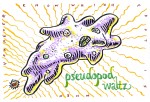
To be continued…
To read Part 6 “The View from Under the Walls” click here.
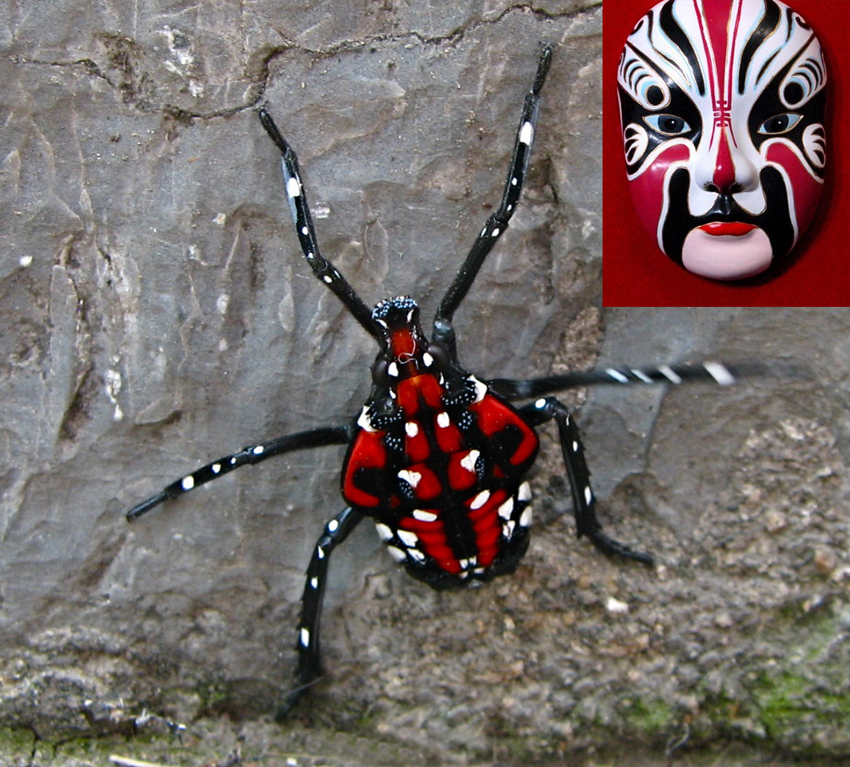 very bad time to become unswimmable, I thought I’d shamelessly post vicariously from China instead.
very bad time to become unswimmable, I thought I’d shamelessly post vicariously from China instead. And, speaking of poisonous, here’s a sight E caught in a public place in Wuhan: 50 gallon drums of Chloroform rusting under a staircase. For when you really, really, need to make sure something’s asleep…
And, speaking of poisonous, here’s a sight E caught in a public place in Wuhan: 50 gallon drums of Chloroform rusting under a staircase. For when you really, really, need to make sure something’s asleep…
